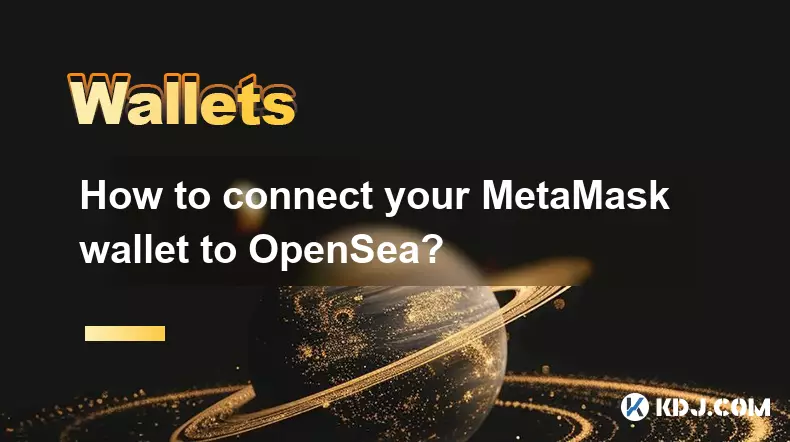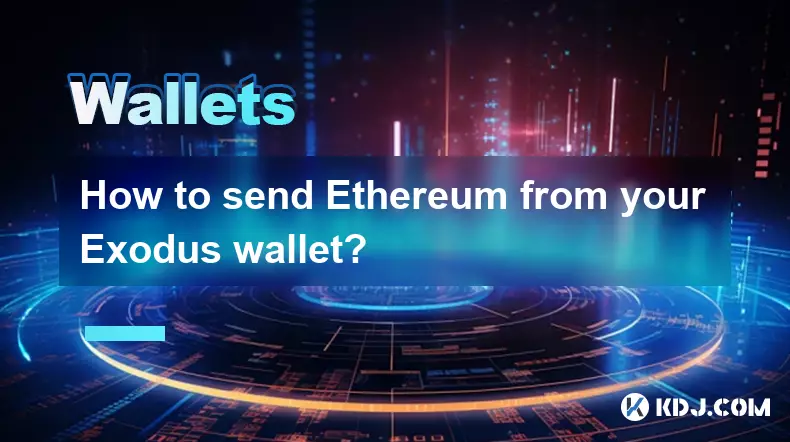-
 bitcoin
bitcoin $115469.758015 USD
0.29% -
 ethereum
ethereum $4536.640472 USD
-1.35% -
 xrp
xrp $2.998395 USD
-1.04% -
 tether
tether $1.000274 USD
-0.02% -
 bnb
bnb $921.981367 USD
-0.33% -
 solana
solana $235.464989 USD
-2.21% -
 usd-coin
usd-coin $0.999955 USD
0.02% -
 dogecoin
dogecoin $0.269732 USD
-2.68% -
 tron
tron $0.345815 USD
-0.84% -
 cardano
cardano $0.865586 USD
-2.26% -
 hyperliquid
hyperliquid $53.710810 USD
0.30% -
 chainlink
chainlink $23.619558 USD
-1.81% -
 ethena-usde
ethena-usde $1.001114 USD
-0.01% -
 sui
sui $3.539388 USD
-3.58% -
 avalanche
avalanche $29.724102 USD
1.08%
How to connect your MetaMask wallet to OpenSea?
Connect your MetaMask wallet to OpenSea to securely browse, buy, and manage NFTs across multiple blockchains with full control over your digital assets.
Sep 11, 2025 at 11:37 pm

Understanding MetaMask and OpenSea Integration
1. MetaMask serves as a non-custodial cryptocurrency wallet that enables users to interact with decentralized applications on the Ethereum blockchain. OpenSea operates as one of the largest marketplaces for non-fungible tokens (NFTs), allowing users to buy, sell, and trade digital assets. Connecting MetaMask to OpenSea is essential for accessing NFT functionalities directly from the wallet interface.
2. The integration process leverages Ethereum’s web3 standard, which allows websites to securely request access to a user’s wallet. When MetaMask is connected to OpenSea, the platform can display wallet balances, transaction history, and owned NFTs without storing private keys. This ensures security remains in the user’s control.
3. Before initiating the connection, users must ensure that MetaMask is properly installed as a browser extension or mobile app and that it contains sufficient Ethereum (ETH) for gas fees. Without ETH, transactions such as NFT purchases or transfers cannot be executed on OpenSea.
4. OpenSea supports multiple blockchain networks including Ethereum, Polygon, and others. Users should confirm which network their NFTs are based on and switch MetaMask to the corresponding network before connecting. Mismatched networks may result in invisible assets or failed transactions.
5. The entire process is permission-based. OpenSea cannot perform any action on the wallet without explicit user approval through MetaMask confirmation prompts. This design prevents unauthorized access and maintains user sovereignty over digital assets.
Step-by-Step Connection Process
1. Navigate to the OpenSea website using a compatible browser such as Chrome or Firefox with the MetaMask extension already installed and unlocked. Ensure the MetaMask wallet is active and displaying the correct account.
2. Click on the profile icon located in the top-right corner of the OpenSea homepage. A dropdown menu will appear, presenting the option to connect a wallet. Select “MetaMask” from the list of available wallets.
3. A pop-up window from MetaMask will appear, requesting permission to connect to OpenSea. Review the details carefully, including the URL to confirm it matches the official OpenSea domain. Click “Next” and then “Connect” to authorize the link.
4. Once connected, OpenSea will automatically load the wallet’s NFT inventory, ETH balance, and transaction history. Users can now browse listings, place bids, and manage collections directly through the interface.
5. To switch accounts or disconnect, return to the profile menu on OpenSea and select “Disconnect wallet.” This revokes OpenSea’s access without affecting funds or private keys stored in MetaMask.
Security Considerations During Connection
1. Always verify the authenticity of the OpenSea website by checking the URL: https://opensea.io. Phishing sites often mimic legitimate platforms to steal wallet credentials through fake connection requests.
2. Never share your MetaMask seed phrase or private key with anyone. No legitimate platform, including OpenSea, will ever ask for these details. Connection only requires signing a message through the wallet interface.
3. Be cautious of suspicious pop-ups or requests for additional permissions beyond wallet address access. Malicious scripts may attempt to exploit wallet connections for unauthorized transactions.
4. Regularly review connected sites in MetaMask settings under the “Connected Sites” tab. Remove access for platforms no longer in use to minimize exposure to potential exploits.
5. Enable two-factor authentication on associated email accounts and use strong passwords to protect the infrastructure supporting wallet access.
Troubleshooting Common Connection Issues
1. If OpenSea fails to detect MetaMask, refresh the page and confirm the extension is unlocked. Sometimes browser caching or background processes interfere with web3 detection.
2. In cases where NFTs do not appear after connection, ensure the correct network is selected in MetaMask. For example, Polygon-based NFTs will not display when the wallet is set to Ethereum Mainnet.
3. Clearing browser cookies and cached data can resolve persistent connection errors. Alternatively, try accessing OpenSea in an incognito window with MetaMask re-enabled.
4. Users experiencing repeated disconnections should check for conflicting browser extensions that might block web3 scripts. Disabling ad blockers or privacy tools temporarily may help identify the source.
5. Updating MetaMask to the latest version ensures compatibility with evolving web3 standards and fixes known bugs affecting dApp interactions.
Frequently Asked Questions
Can I connect multiple MetaMask accounts to OpenSea?Yes, users can switch between different MetaMask accounts and connect each to OpenSea individually. Only one account can be active at a time, but switching is seamless through the wallet interface.
Does connecting MetaMask to OpenSea cost gas fees?No, the act of connecting a wallet does not require a blockchain transaction and therefore incurs no gas fees. Fees apply only when buying, selling, or transferring NFTs.
What happens if I lose access to my MetaMask wallet after connecting to OpenSea?If access is lost due to forgotten password or lost seed phrase, the connection to OpenSea becomes inactive. Recovery depends solely on the ability to restore the wallet using backup credentials.
Is it safe to keep MetaMask connected to OpenSea?Yes, as long as the device and browser are secure. OpenSea cannot execute transactions without user approval. However, disconnecting when not in use reduces the attack surface.
Disclaimer:info@kdj.com
The information provided is not trading advice. kdj.com does not assume any responsibility for any investments made based on the information provided in this article. Cryptocurrencies are highly volatile and it is highly recommended that you invest with caution after thorough research!
If you believe that the content used on this website infringes your copyright, please contact us immediately (info@kdj.com) and we will delete it promptly.
- Avalanche Alert: AVAX ETF Buzz and Bullish Charts – To the Moon?
- 2025-09-17 04:45:15
- TRX, Pi Coin, BlockDAG: Navigating Crypto's Tides
- 2025-09-17 04:45:15
- CleanCore's Dogecoin Holdings: A Bold Move or a Risky Bet?
- 2025-09-17 05:05:12
- Pump, Fun, Problem: Navigating the Wild West of Crypto Streaming
- 2025-09-17 05:05:12
- Anchor Protocol's DeFi Dream: From Boom to Bust and Beyond
- 2025-09-17 04:50:12
- Google, Coinbase, and Stablecoin AI: A New Era of Autonomous Transactions
- 2025-09-17 04:50:12
Related knowledge

How to check your crypto portfolio performance in Exodus?
Sep 14,2025 at 08:36am
Accessing Your Portfolio Overview in Exodus1. Launch the Exodus application on your desktop or mobile device and enter your password to unlock your wa...

How to sell crypto from your Exodus wallet?
Sep 13,2025 at 12:01pm
Selling Crypto from Your Exodus WalletExodus is a popular non-custodial wallet that supports a wide range of cryptocurrencies. While it doesn’t allow ...

Can I use a Ledger Nano X with the Exodus wallet?
Sep 16,2025 at 04:36am
No, you cannot use a Ledger Nano X directly with the Exodus wallet. While both are popular tools in the cryptocurrency space, they are not compatible ...

How to back up your Exodus wallet?
Sep 11,2025 at 04:19pm
Understanding Exodus Wallet Backup Basics1. Exodus is a software wallet that allows users to store, manage, and exchange various cryptocurrencies dire...

How to send Ethereum from your Exodus wallet?
Sep 16,2025 at 11:36am
Preparing Your Exodus Wallet for Ethereum Transfer1. Ensure your Exodus wallet is updated to the latest version available on the official website or a...

How to transfer funds from Binance to your Exodus wallet?
Sep 10,2025 at 10:19pm
Connecting Your Binance Account to Exodus Wallet1. Log in to your Binance account and navigate to the 'Wallet' section under the 'Funds' tab. Select '...

How to check your crypto portfolio performance in Exodus?
Sep 14,2025 at 08:36am
Accessing Your Portfolio Overview in Exodus1. Launch the Exodus application on your desktop or mobile device and enter your password to unlock your wa...

How to sell crypto from your Exodus wallet?
Sep 13,2025 at 12:01pm
Selling Crypto from Your Exodus WalletExodus is a popular non-custodial wallet that supports a wide range of cryptocurrencies. While it doesn’t allow ...

Can I use a Ledger Nano X with the Exodus wallet?
Sep 16,2025 at 04:36am
No, you cannot use a Ledger Nano X directly with the Exodus wallet. While both are popular tools in the cryptocurrency space, they are not compatible ...

How to back up your Exodus wallet?
Sep 11,2025 at 04:19pm
Understanding Exodus Wallet Backup Basics1. Exodus is a software wallet that allows users to store, manage, and exchange various cryptocurrencies dire...

How to send Ethereum from your Exodus wallet?
Sep 16,2025 at 11:36am
Preparing Your Exodus Wallet for Ethereum Transfer1. Ensure your Exodus wallet is updated to the latest version available on the official website or a...

How to transfer funds from Binance to your Exodus wallet?
Sep 10,2025 at 10:19pm
Connecting Your Binance Account to Exodus Wallet1. Log in to your Binance account and navigate to the 'Wallet' section under the 'Funds' tab. Select '...
See all articles










































































